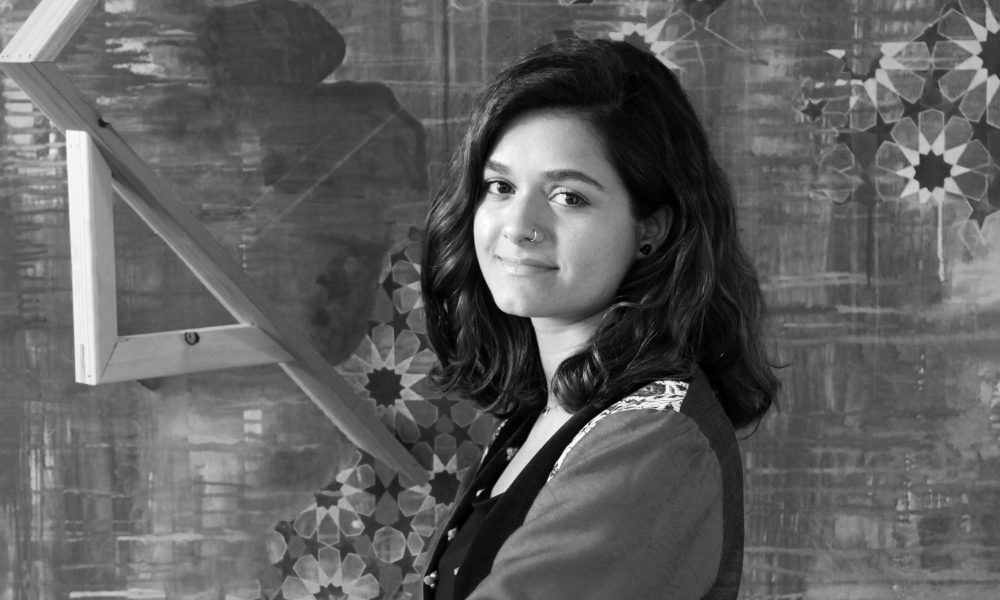

Today we’d like to introduce you to Ghazal Rahimi.
Hi Ghazal, so excited to have you on the platform. So before we get into questions about your work-life, maybe you can bring our readers up to speed on your story and how you got to where you are today?
I moved to the United States at the age of twenty from Iran to pursue art as a professional career, and ever since, I’ve grown to learn more about my position in America as a woman, an immigrant, and a person of color. Coming from a Third World country where, as an artist and creator I had to work hard to step beyond assigned limits for women and fight the issues of censorship, I learned that if I don’t speak my reality, my truth, they will not fail to speak for me. My way of speaking forward is my own profession to art, writing, and pedagogy. My art career is equally informed by art-making, teaching, reading, and writing.
Alright, so let’s dig a little deeper into the story – has it been an easy path overall and if not, what were the challenges you’ve had to overcome?
Definitely not. But when you do something that you truly believe in, things won’t stay tangled for too long.
I came to the U.S. as an international student. As someone shifting between multiple cultures and languages and living in a transitional space, I had to deal with issues of being an international student on top of that. Like many others, as an international student, I experienced being “almost nobody” that works the lowest-paying jobs on campus and has to constantly stress about their immigration status and life after graduation. Most academics know very little about international students’ problems and immigration laws. There were many jobs that I had to turn down because I wasn’t a US Citizen and many opportunities I couldn’t accept as an artist because I wasn’t able to travel. Being an artist/teacher may have made it harder since there are always less opportunities for creatives. But within that uncertainty, I found my own light. My art practice has always been a place of healing for me, a space for mending and transformation. I do believe that art has the power to effect change, and I always used my art as a tool to communicate those difficult stories and to bring attention to invisible/forgotten legacies.
As you know, we’re big fans of you and your work. For our readers who might not be as familiar what can you tell them about what you do?
I explore cross-cultural or intercultural issues and question the notion of authenticity and being different in relation to oppressing one group or oneself. Unearthing the untold and invisible stories and forgotten legacies, I create complex visual and haptic relations. I utilize Islamic geometric patterns and arabesque margins and shatter their designs to represent liberation from cultural pressure and geopolitical borders, and more importantly to create a sense of destruction that leads to new growth. By presenting the Islamic and abstract patterns out of their historical function and purpose (that was beauty and to show the notion of the divine), I want to bring attention to how cultural heritage could be reinvented and used as a corridor to progressive modernity.
My three-dimensional work is a group of wall-mounted sculptures that include both unfired and fired/glazed clay, which is often combined with other materials and objects of personal significance. These pieces are made using fractured Islamic tiles and are in a state in-between construction and deconstruction. The process and the visuality of the work are concerned with change and becoming, interiors and exteriors, weight, volume, and time. These sculptures are made from fractured Islamic tiles and explore the idea of ruin as a catalyst for new perspectives.
My drawings and paintings are concerned with healing, mending, and oppression in reference to the human body, and most importantly women, non-binary and marginalized bodies. With the fragmentation of the human body and the broken geometric patterns, the washes of turquoise color (which has a reference to the historic use and meaning of turquoise in Middle Eastern art history), I aim to create a liminal space, in-between abstraction and figuration, to deconstruct the systematic rules of separating and categorizing and to make space for a new revolution.
We all have a different way of looking at and defining success. How do you define success?
To me, success is living in a moment and doing the best you can at each step of the way.
Contact Info:
- Website: https://ghazalrahimi.com
- Instagram: www.instagram.com/ghazalrahimi_studio






Image Credits:
Ghazal Rahimi, Courtesy of the artist.














